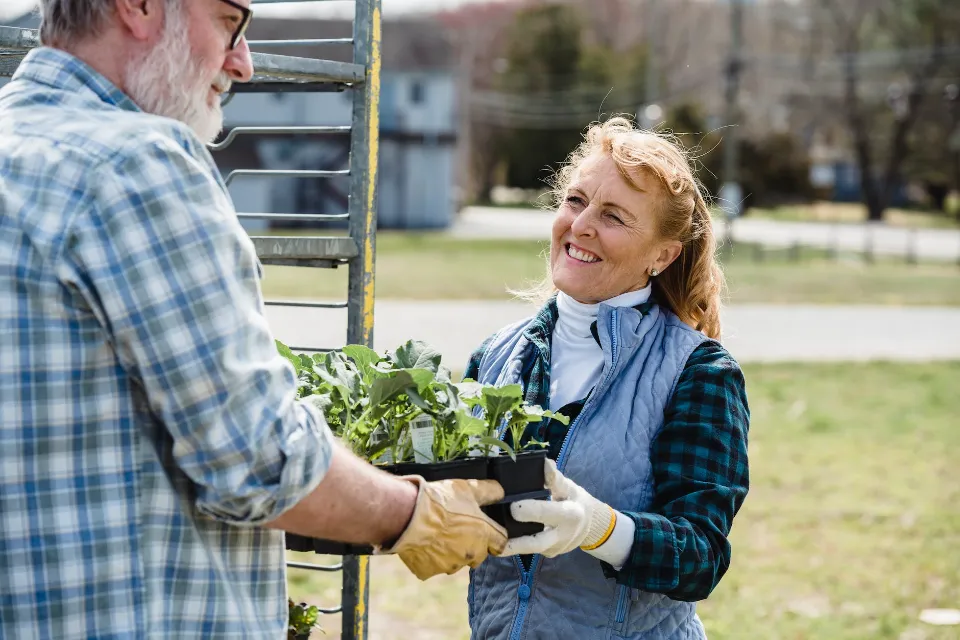When an elderly person has difficulty getting out of their chair, that is the first thing you will notice. It could be a typical kitchen chair or a chair with arms and a backrest. No matter the type of chair, if the elderly person needs assistance to get up from it, there is a problem.
If someone needs help getting up from a chair, the first thing to remember is positioning. If someone isn’t in the proper position, it will be much harder for them to get to their feet or for you to assist them.
This blog post will outline some guidelines for helping seniors get up from a chair and offer some advice that both individuals and caregivers have found to be very useful.
Why Do The Elderly Have a Difficult Time Up from a Chair?
Seniors may find it difficult to get up from a chair for a few common reasons. It may be more difficult to stand up from a seated position as we get older because we tend to lose muscle mass and strength.
In addition, a lot of seniors struggle with joint pain, stiffness, or balance problems, which can make it more challenging to get out of a chair. You can assist an elderly loved one who is having trouble rising from a chair by doing a few things.
- Verify the stability of each chair in their residence.
- A chair should ideally be positioned as close to a wall or other solid surface as you can. This will provide them with support if they begin to feel unsteady.
- Verify that the chair they are seated in is the right height. It will be more challenging for them to stand up if the chair is too low.
- Make sure there are arm rests on the chair. This will give them something to push against when they are trying to stand up.
You can always get assistance from their doctor or a home health care agency if you’re still having trouble getting your loved one out of a chair.

How to Help An Elderly Person Up from a Chair?
Things to Keep in Mind
Position
When you’re helping an elderly person up from a chair, it’s important to put yourself in the right position. The person’s weaker side should be where you should be standing. They are facing you, so face that way too. Then, crouch down so your body is close to theirs and bend your knees. This will give you more leverage and make it easier to lift them.
Arms and Legs
It’s important to use your arms and legs correctly when assisting an elderly person out of a chair so that both you and they are protected.
Initially, wrap your arm around their back and grab hold of the shoulder on the opposite side. Then, put your other hand either by their hip or if you are using a gait belt, on that. Next, lift your senior companion to a standing position using only your legs.
Stand Independently
- Place yourself in the chair’s front. If someone is sitting like this, don’t try to get them out of the chair. The shoulders are hunched over and the feet are in front of the knees. No one could stand up from this position, regardless of age, strength, or ability. (Try it for yourself)
- Lean your shoulders over your knees. Your loved one should look down instead of forward or up while hunching their shoulders forward over their knees. People have traditionally stood up from a seated position in this way since the beginning of time. Try getting out of a chair while leaning backwards to gain a practical understanding.
- Over the knees, advance. It’s important to note that the person should still be looking down toward the ground during this step. It’s when a person tries to straighten up and look forward/up before they are balanced on their feet, that pulls them backward to the chair and gives the impression that they are “weak” or “can’t stand up”.
- Weight Transfer to Forefeet and Forward Motion. They must now release the chair and shift their weight from their heels to the front of their feet. Note: If they continue to hold onto the arms of the chair, their body weight will be distributed backwards to the rear and again, they will feel they “can’t stand up”. But in reality, no one could. If you want to see this for yourself, try getting up while your hands are still on the chair’s arms.
- Straighten Upright. It’s only when the body weight is shifted to the front of the feet that the person should try to straighten up and stand upright. At this point, the person is in balance. As was already mentioned, it’s best for the person to have their walker in front of them so they can support themselves.

From a Chair to Another
- Ascertain whether the person is stable and prepared to stand.
- Just below the shoulder joints, place your hands on the upper arms of the person.
- Firmly but gently pull the person to a standing position.
- Have them put their hand on your arm to support you.
- Walk with the person to the other chair.
- Assisted seating is needed for the individual.
- Be sure they are at ease and settled before letting go.
From a Reclining Position
- A stable position for yourself should come first. Do not try to help the other person up if you are unsteady on your feet.
- Next, bend down so that you are close to the other person. You may need to get into a kneeling position if they are very low to the ground.
- Put one of your hands near their armpit and the other under their arm, just below their shoulder.
- Ask them to place their hand on your shoulder for support before you begin to help them stand.
- Make sure they are stable once they are sitting up straight before releasing your hold on them. If they are still unsteady, continue to support them until they are safe.
Summary
The most important thing to remember when helping an elderly person get up from a chair is to be safe and not to attempt to perform the task if you do not think you can do it yourself.
Numerous qualified caregivers are available to assist you with this task. In lifting and moving people safely, they have received training and experience. It is best to speak with one of these experts if you are unsure of how to proceed or if you worry that you might not be able to finish the task safely.



